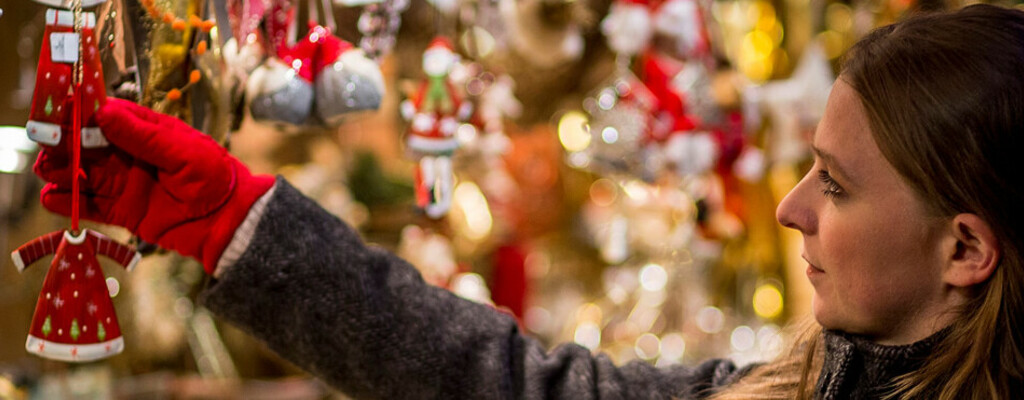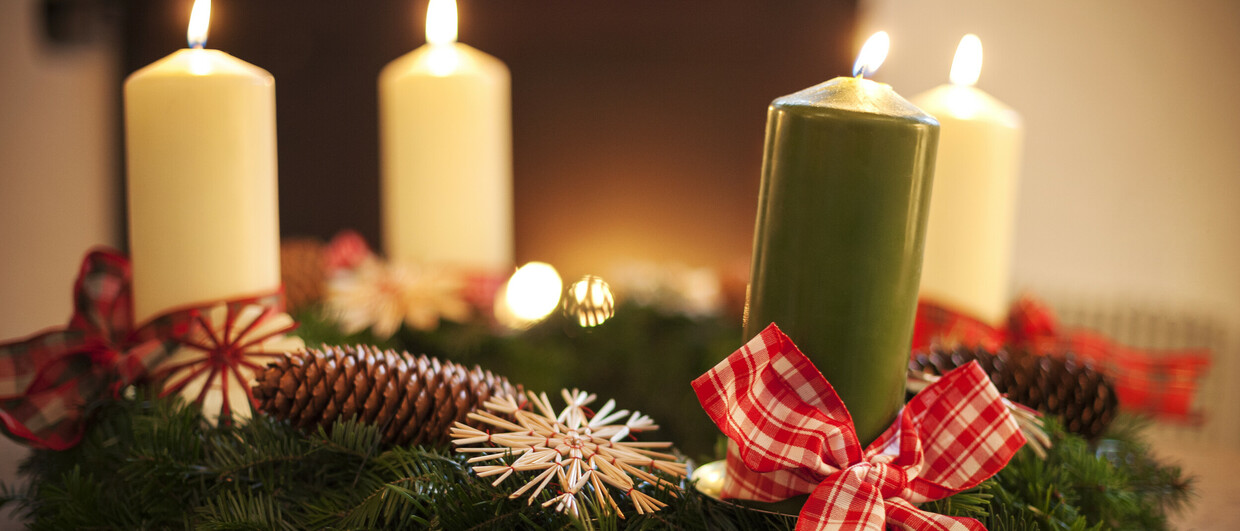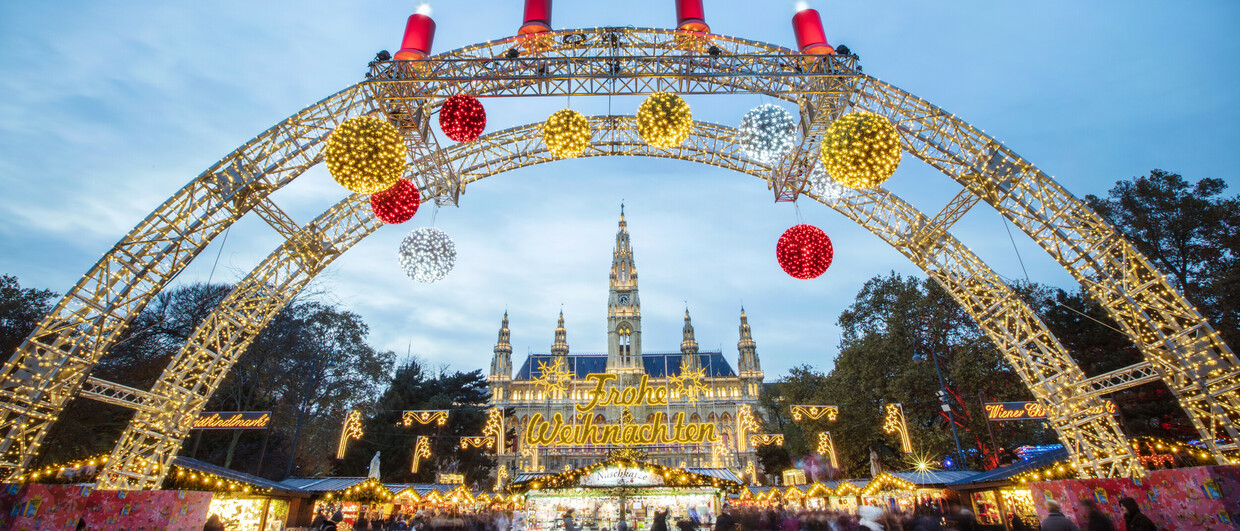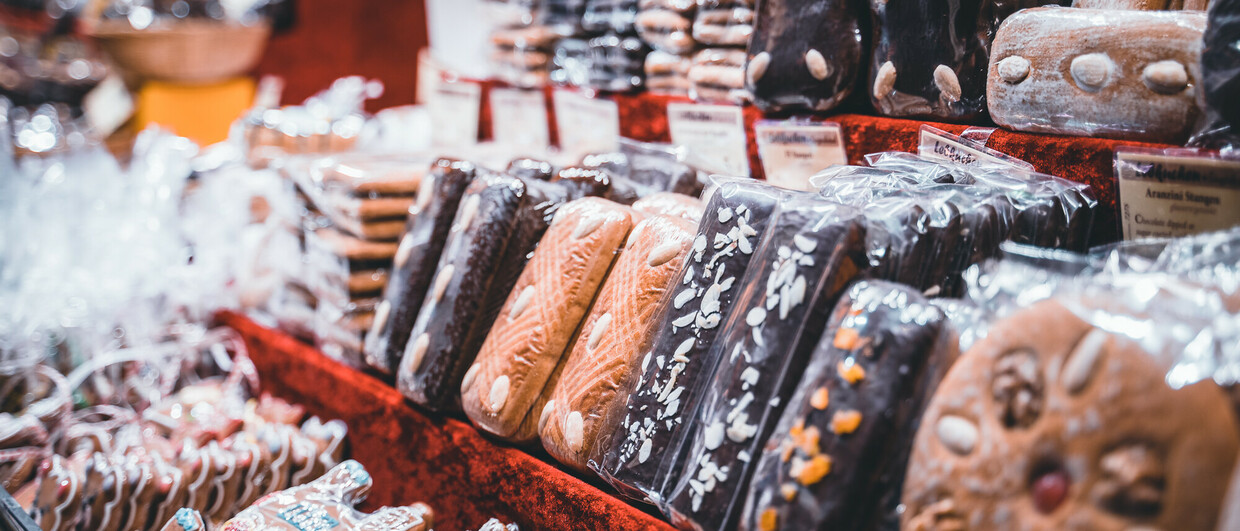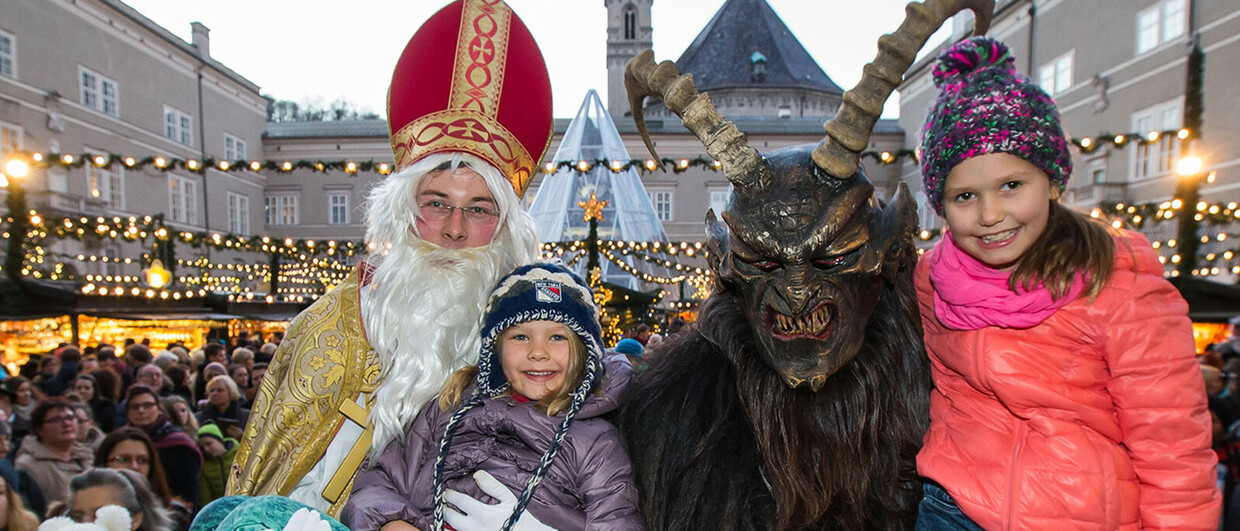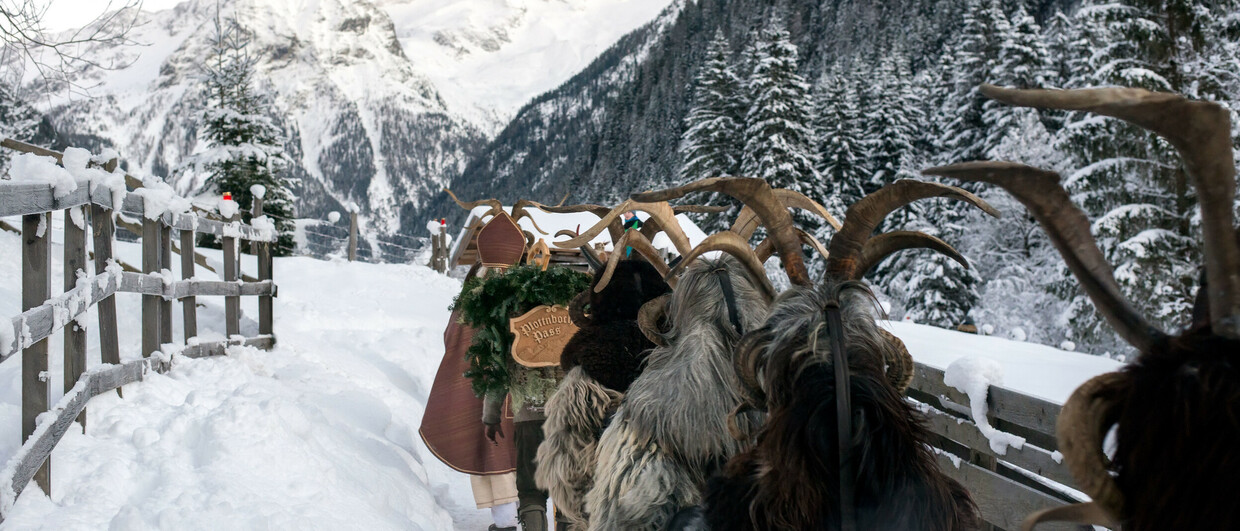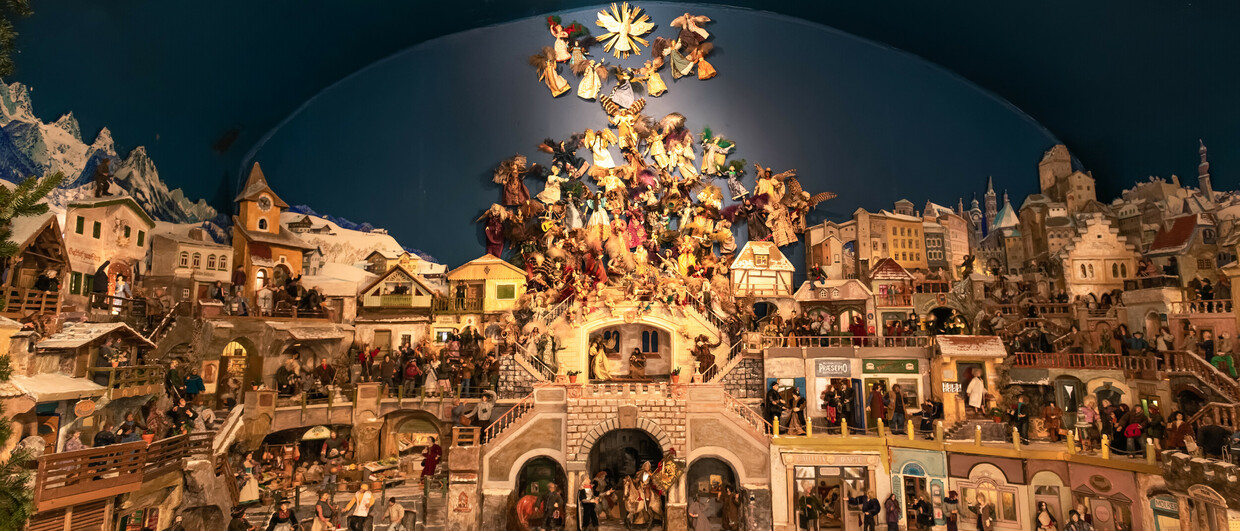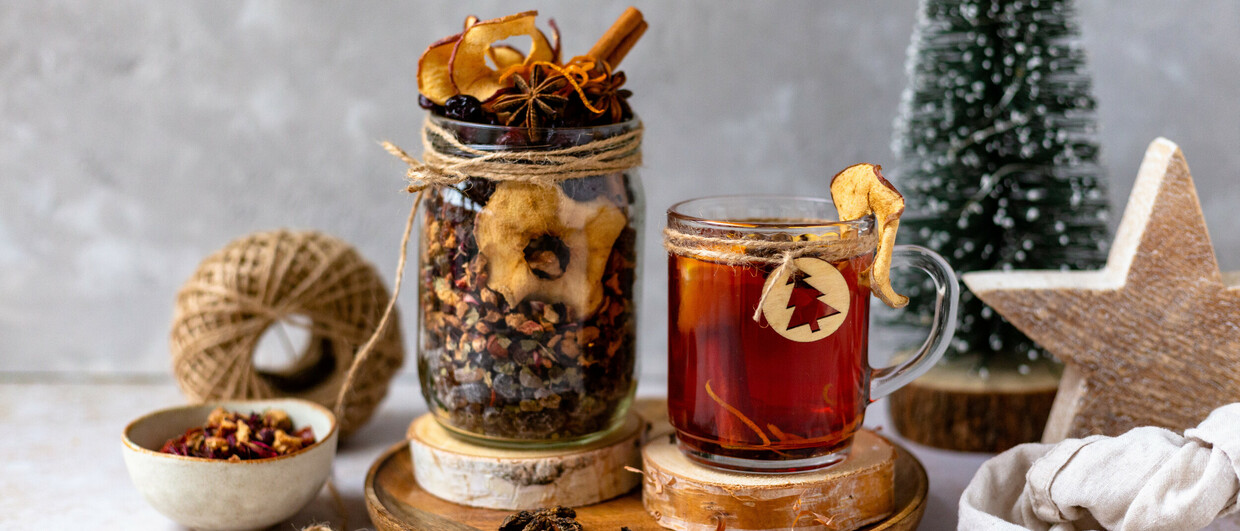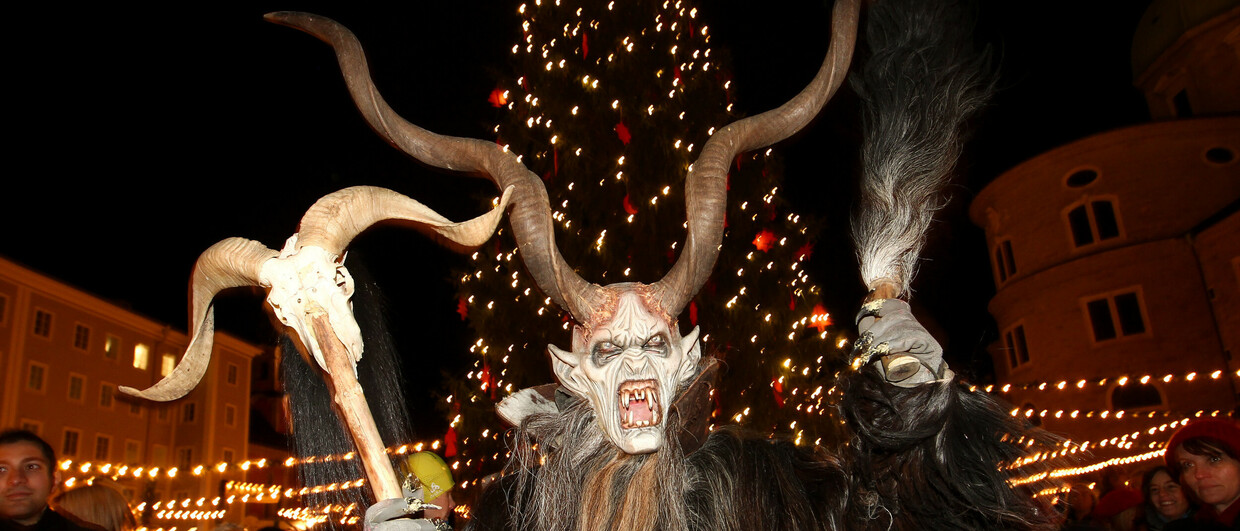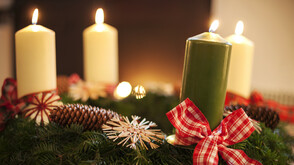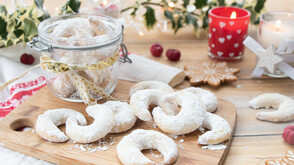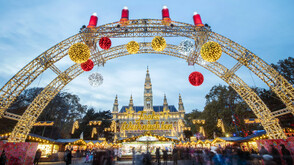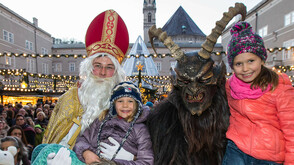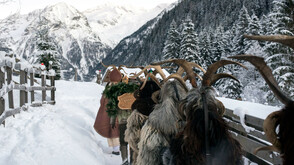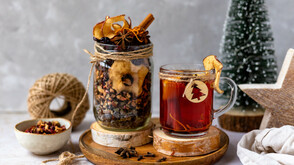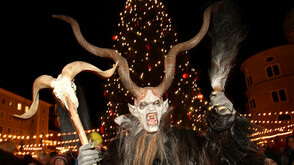Christmas in Austria: 7 Traditions You Need to Know
From Vanillekipferl, to Krampus runs and - of course - the Christkind: Let us show you how Christmas is celebrated in Austria.
Advent, also known as “the most peaceful time of the year”, is a pretty special time in Austria. And, above all, it is a time when centuries-old traditions come back to life: These range from baking festive biscuits, to putting up Christmas decoration and lighting up candle by candle on the Advent wreath, to the famous Krampus runs, a unique custom that sees people roaming the streets in devel-like costumes, or the Christkind, Austria’s traditional gift-bringer, mingling with Christmas market goers.
While the world-famous markets are undoubtedly one of the major reasons for many holidaymakers travelling to Austria in the weeks leading to Christmas, there’s a lot more to the festive period they shouldn’t miss out on. Have a look at seven traditions
THE ADVENT WREATH
The concept of the Advent wreath goes back to German Lutherans in the 16th century. However, it wasn’t until 1839 that the version we know today appeared. And from then on, it quickly became an important symbol of the festive season in Austria as well. The traditional evergreen wreath has four candles and is used to count down the weeks leading up to Christmas. On four consecutive Sundays, candle after candle is lit, until, by the last Sunday of Advent, all four are burning. Some wreaths also have a fifth candle in the middle that is lit on Christmas Eve or Christmas Day.
Advent wreaths have traditionally been used in family settings but can now be seen everywhere from Christmas markets to restaurants, offices, churches or other public spaces.
ST NICHOLAS, KRAMPUS AND PERCHTEN
Advent time, precisely the 5 and 6 December, is also when two folkloristic figures appear in Austria: St Nicholas (“Nikolaus”) and Krampus. While the former, a jolly old man with a long beard, wearing a red robe or bishop’s coat, rewards well-behaved children with sweets, peanuts, tangerines, and little presents, the later shows up to give the naughty ones a warning. Krampus is a devil-like figure, half-demon, half-goat, with horns on his head, traditionally wearing a scary carved wooden mask and chains around his neck, ankles, and wrists, carrying a bundle of birch branches or even a whip to scare
The two traditionally show up as a pair. However, there are also special Krampus runs, e.g. in Salzburg or Tirol, seeing dozens, sometimes hundreds of people roaming the streets in masks and costumes, with drums and chains. Equally popular are the Perchten runs all December. These figures look a bit like Krampus and arrive with drums and other noisy gear, ready to drive the evil winter spirits away.
CHRISTMAS MARKETS
Austria’s Christmas markets date back to the 18th century and started out as day-time food and drinks markets. The festive lights were added in the 20th century, making the markets even more attractive – and romantic. Today, kids (and kids at heart) can not only browse through a huge variety of stalls, selling everything from punch to chestnuts, traditional handicrafts, and unique local gifts, but also join the locals for some Christmas carol singing, mingle with angels or meet the “Christkind” (see below). While Austria’s Christmas markets might be major tourist attractions, they locals love and frequent them equally.
Most towns in Austria have several markets, but they can also be found in popular skiing resorts, or even at the lakeshore. Read more about Christmas markets in Austria here.
PEACE LIGHT OF BETHLEHEM
The Peace Light of Bethlehem (Friedenslicht) is picked up from Bethlehem every year by an Austrian delegation – usually including a child from Upper Austria – and then distributed to churches and other public buildings. This tradition was started in 1986 in support of a charity for children with special needs and is still thriving almost 30 years later. The light is distributed around the country by the Scout movement and most people bring their own candles and lanterns to pick it up and bring it back to their homes.
From Austria, the Peace Light of Bethlehem has travelled on to more than 20 countries in Europe, and even the Americas.
VANILLEKIPFERL, GINGERBREAD AND CHRISTMAS PUNCH
Advent isn’t the time to worry about your calory intake – in Austria, festive cookies and drinks are just as important as the Christmas tree. Among the local favourites are Vanillekipferl (crescent-shaped biscuits), Lebkuchen (gingerbread – comes in all forms and shapes and was rumoured to have healing powers back in the day) and Linzer Augen (“Linzer Eye Cookies” – two pieces of shortbread cookies glued together with red currant jam).
When it comes to drinks, Austrians love mulled wine (mulled cider is less common) but their traditional go-to drink is Christmas punch, a mix of wine, tea, rum, orange/lemon juice, and festive spices. Besides the traditional punch, you’ll find all imaginable (and unimaginable) versions at Christmas markets, adding everything from chocolate to berries and vanilla sauce.
NATIVITY SCENES
No Christmas in Austria would be complete without a nativity scene. Most families have one at home and put it up shortly before Christmas Eve, the typical arrangement featuring Mary, Joseph and Baby Jesus, an ox and donkey, plus optional figures such as the Three Kings. Visitors can marvel at beautiful handmade cribs in churches or special exhibitions all over in Austria, with Salzburg and Innsbruck being especially renowned places to see them.
THE CHRISTKIND BRINGS THE GIFTS
Austria doesn’t traditionally have a Santa Claus (even though he is widely known thanks to pop culture). Here, it’s the Christkind (the Christ child, aka Baby Jesus) that comes bearing gifts. The Christkind – or Christkindl – is an angel-like figure, with blond curls, white feathery wings, and a halo above its head. It can only be seen by adults, and parents typically tell their children it won’t bring presents if they are trying to spot it. Once the Christkind has lit the candles on the Christmas tree and put the presents under it, it announces its departure by ringing a small bell. This is the signal for the family to gather for the opening of the presents (called “Bescherung”). Unlike in the U.K., this happens on Christmas Eve rather than Christmas Day.
DOWNLOAD THE FULL PRESS RELEASE HERE
Photos available below. Please include photo credits.
For further information and images, please contact pressuk@austria.info.

